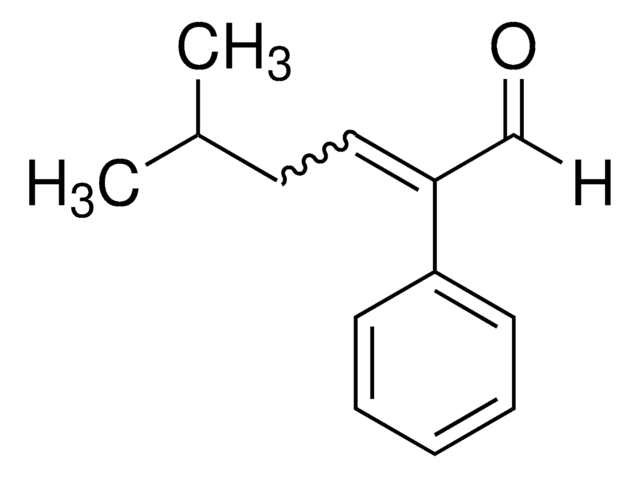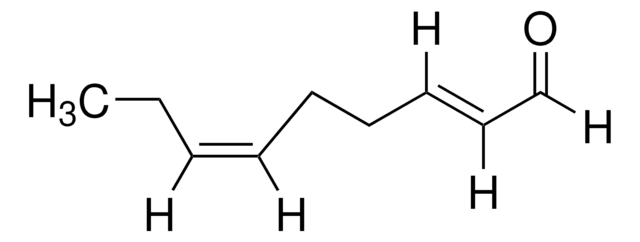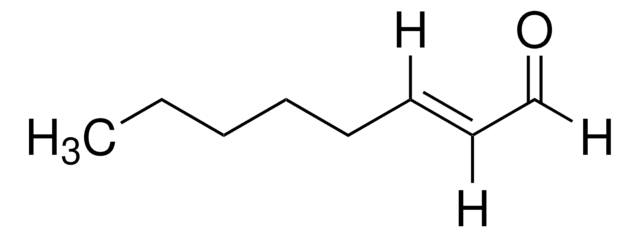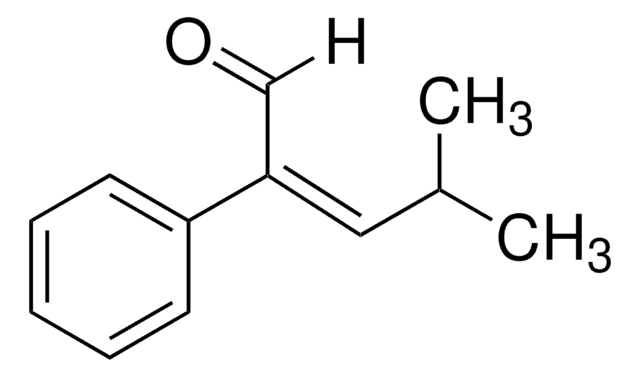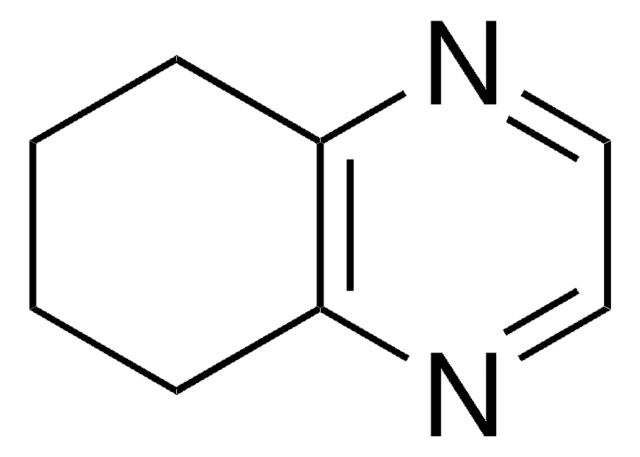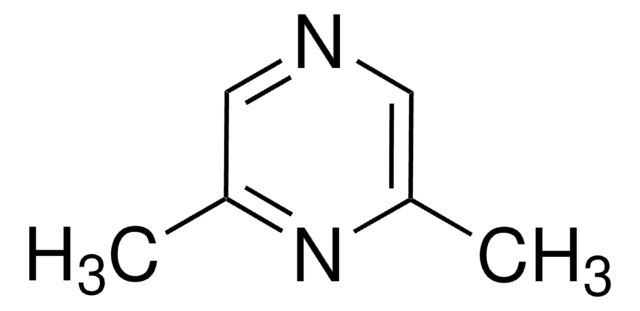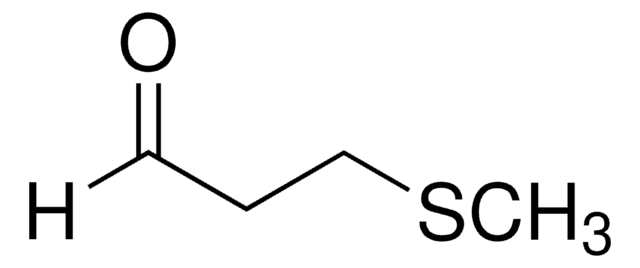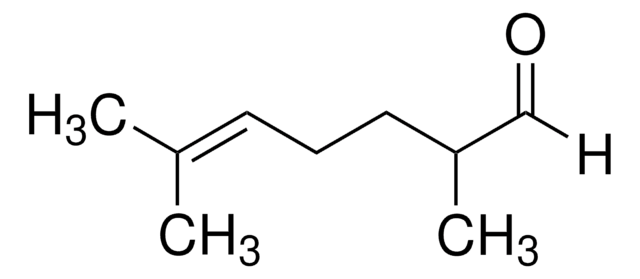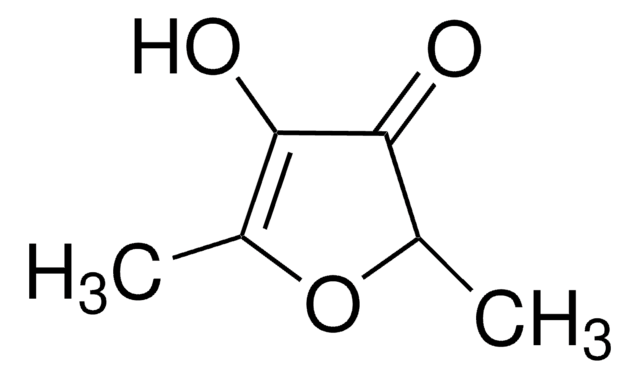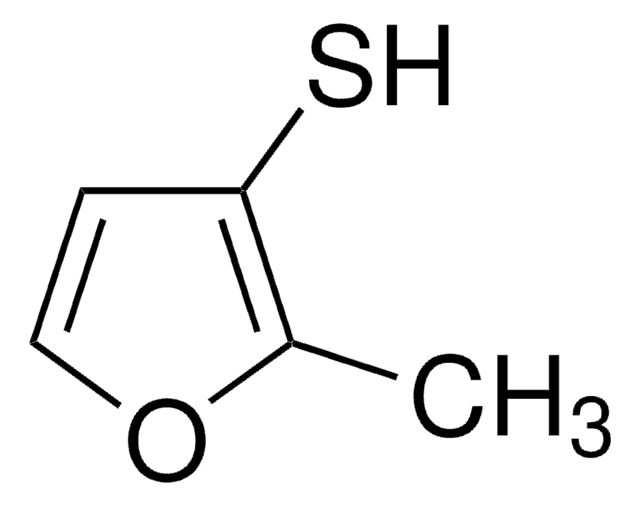W328901
cis-4-Heptenal
≥98%, stabilized, FCC, FG
Synonyme(s) :
(Z)-4-heptenal, N-propylidene butyraldehyde
About This Item
Produits recommandés
Source biologique
synthetic
Niveau de qualité
Qualité
FG
Fragrance grade
Halal
Kosher
Agence
follows IFRA guidelines
Conformité réglementaire
EU Regulation 1223/2009
EU Regulation 1334/2008 & 178/2002
FCC
FDA 21 CFR 172.515
Essai
≥98%
Contient
α-tocopherol, synthetic as stabilizer
Indice de réfraction
n20/D 1.434 (lit.)
Densité
0.847 g/mL at 25 °C (lit.)
Application(s)
flavors and fragrances
Documentation
see Safety & Documentation for available documents
Allergène alimentaire
no known allergens
Allergène de parfum
no known allergens
Propriétés organoleptiques
fatty; green; vegetable
Chaîne SMILES
[H]C(=O)CC\C=C/CC
InChI
1S/C7H12O/c1-2-3-4-5-6-7-8/h3-4,7H,2,5-6H2,1H3/b4-3-
Clé InChI
VVGOCOMZRGWHPI-ARJAWSKDSA-N
Catégories apparentées
Description générale
Application
- Microbial community succession and their relationship with the flavor formation during the natural fermentation of Mouding sufu.: This study explores the role of cis-4-Heptenal in the flavor formation during the fermentation of Mouding sufu, highlighting its importance in food chemistry and microbial interactions (Chen et al., 2023).
- Kinetics studies of the gas-phase reactions of NO3 radicals with series of 1-alkenes, dienes, cycloalkenes, alkenols, and alkenals.: The paper discusses the reaction kinetics of cis-4-Heptenal with NO3 radicals, providing valuable data for atmospheric chemistry and the study of air pollutants (Zhao et al., 2011).
Actions biochimiques/physiologiques
Autres remarques
Mention d'avertissement
Warning
Mentions de danger
Conseils de prudence
Classification des risques
Flam. Liq. 3
Code de la classe de stockage
3 - Flammable liquids
Classe de danger pour l'eau (WGK)
WGK 3
Point d'éclair (°F)
105.8 °F - closed cup
Point d'éclair (°C)
41 °C - closed cup
Équipement de protection individuelle
Eyeshields, Faceshields, Gloves, type ABEK (EN14387) respirator filter
Faites votre choix parmi les versions les plus récentes :
Déjà en possession de ce produit ?
Retrouvez la documentation relative aux produits que vous avez récemment achetés dans la Bibliothèque de documents.
Les clients ont également consulté
Global Trade Item Number
| Référence | GTIN |
|---|---|
| W328901-1KG-K | 4061837835520 |
| W328901-850G | |
| W328901-SAMPLE | |
| W328901-SAMPLE-K | 4061837529207 |
| W328901-100G | |
| W328901-100G-K | 4061837835513 |
| W328901-1KG | |
| W328901-200G | |
| W328901-200G-K |
Notre équipe de scientifiques dispose d'une expérience dans tous les secteurs de la recherche, notamment en sciences de la vie, science des matériaux, synthèse chimique, chromatographie, analyse et dans de nombreux autres domaines..
Contacter notre Service technique